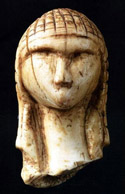Anthropology, Department of

Department of Anthropology: Faculty Publications
Document Type
Article
Date of this Version
2016
Citation
Richards-Rissetto, H., S. Sanford-Long, and J. Kerby-Miller. 2016. 3D Tool Evaluation and Workflow for an Ecological Approach to Visualizing Ancient Socio- Environmental Landscapes: A Case Study from Copan, Honduras. In Digital Methods and Remote Sensing in Archaeology: Archaeology in the Age of Sensing. Springer International Publishing. Series: Quantitative Methods in the Humanities and Social Sciences. M. Forte and S. Campana (editors). DOI: 10.1007/978-3-319-40658-9
Abstract
Architectural reconstructions are the centerpieces of ancient landscape visualization. When present, vegetation is relegated to the background, resulting in underutilized plant data—an integral data source for archaeological interpretation—thus limiting the capacity to take advantage of 3D visualization for studying ancient socio-environmental dynamics. Our long-term objective is to develop methods of 3D landscape visualization that have value for examining changes in land use and settlement patterns. To begin to work toward this objective, we have (1) identified 3D tools and techniques for vegetation modeling and landscape visualization, (2) evaluated the pros and cons of these tools, (3) investigated biological and ecological approaches to simulate plant habitats, the data requirements of these approaches, and the pros and cons of these approaches for reconstructing archaeological landscapes, and (4) then built on these findings to propose a workflow to integrate archaeological, paleoenvironmental, and ethnobotanical into Geographic Information Systems (GIS) for export into a virtual landscape for investigations of ancient socio-environmental interaction. To identify possible 3D digital tools and workflows to visualize plant distribution models alongside archaeological settlement, we keep in mind several key issues: capacity to handle georeferenced data, levels of detail, multi-scalar analysis, and availability of quantitative and qualitative data.
Included in
Archaeological Anthropology Commons, Digital Humanities Commons, Environmental Studies Commons, Geographic Information Sciences Commons, Human Geography Commons, Landscape Architecture Commons, Nature and Society Relations Commons, Remote Sensing Commons, Social and Cultural Anthropology Commons


Comments
This is a chapter published in an edited volume.
Copyright (c) 2016 Springer Verlag. Used by permission.